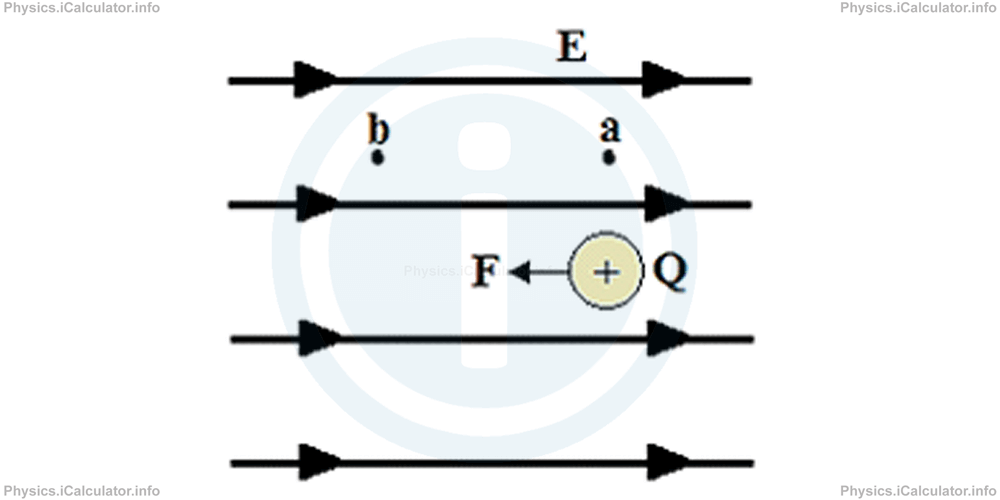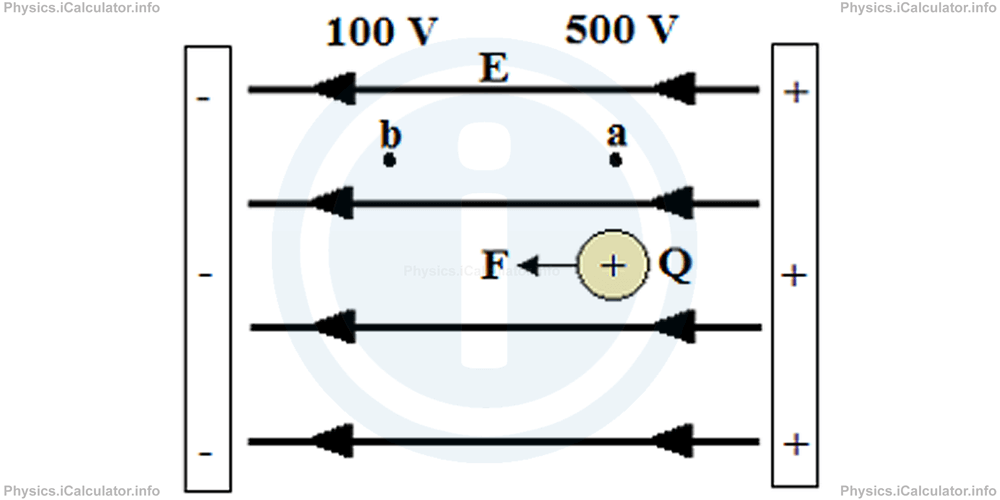Menu
Physics Lesson 14.5.2 - Potential Difference (Voltage)
Please provide a rating, it takes seconds and helps us to keep this resource free for all to use
Welcome to our Physics lesson on Potential Difference (Voltage), this is the second lesson of our suite of physics lessons covering the topic of Electric Potential, you can find links to the other lessons within this tutorial and access additional physics learning resources below this lesson.
Potential Difference (Voltage)
First, we must point out the fact that positive charges placed inside an electric field move from places with higher potential to places with lower potential. Negative charges move inversely, i.e. from places with lower potential to those with higher potential. In this way, a potential difference ΔV is produced. This potential difference indicates that a movement of electric charges exists in that specific region.
Now let's turn again to the concept of electric potential energy discussed in the previous tutorial. As stated earlier, electric potential energy (as all the other types of potential energies) depends on the reference point, which we consider as a point with zero potential. It may be any of plates (usually the negative) in a system composed by two parallel plates charged with opposite signs, the location of a negative point charge and so on.
Like in Kinematics in which the difference in position is more important than the specific position at any instant, here we are more interested in the difference in potential energy or in potential than in the electric potential energy or electric potential at any instant.
Let's assume a positive charge +Q is placed inside a uniform electric field E as shown in the figure below.

When the charge moves from a to b, this is due to the action of an external force F, which does positive work because the charge moves in the opposite direction of electric field that causes an increase in its potential energy. Thus, we can write:
Obviously, the charge will have a difference in potential between the points a and b which is denoted by ΔV (please note that some Physics textbooks denote potential difference as U). Thus, we can write
where Vb is the electric potential at the final point b and Va is the electric potential at the initial point a.
From the meaning of electric potential, we know that
and
where EPEb and EPEa are the electric potential energies of the charge q at points b and a respectively.
Therefore, we can write
= EPEb/q - EPEa/q
= ∆EPEab/q
Thus, we obtain
The last equation is the mathematical expression of the definition of electric potential difference, i.e.
Potential difference between two points is defined as the work done by external forces on a positive charge to move it from the initial to the final position.
In other words, potential difference is the work per unit charge (or the change in potential energy per unit charge).
When rearranging the above formula to represent the work done on the charge to make it move from a to b, we obtain
= q × ∆V
= q × U
Example 3
A 5 μC charge is displaced from the point a of potential 500 V to the point b of potential 100 V.
- What is the work done by the external force during this process?
- What is the work done by the electric force during this process?
- Voltage Feedback. Helps other - Leave a rating for this voltage (see below)
- Electrostatics Physics tutorial: Electric Potential. Read the Electric Potential physics tutorial and build your physics knowledge of Electrostatics
- Electrostatics Revision Notes: Electric Potential. Print the notes so you can revise the key points covered in the physics tutorial for Electric Potential
- Electrostatics Practice Questions: Electric Potential. Test and improve your knowledge of Electric Potential with example questins and answers
- Check your calculations for Electrostatics questions with our excellent Electrostatics calculators which contain full equations and calculations clearly displayed line by line. See the Electrostatics Calculators by iCalculator™ below.
- Continuing learning electrostatics - read our next physics tutorial: Electric Flux. Gauss Law

Solution 3
a) Since the electric potential decreases, the potential difference is negative as
= 100 V - 500 V
= - 400V
= -4 × 102 V
Given that the charge is positive (Q = 5 μC = 5 × 10-6 C), we have for the work by the external forces:
= 5 × 10-6 C × (-4) × 102 V
= -2 × 10-3 J
b) The negative result shows the work is done by the electric force, not by the external forces. Hence, we obtain the value 2 × 10-3 J for the work done by the electric force.
You have reached the end of Physics lesson 14.5.2 Potential Difference (Voltage). There are 8 lessons in this physics tutorial covering Electric Potential, you can access all the lessons from this tutorial below.
More Electric Potential Lessons and Learning Resources
Whats next?
Enjoy the "Potential Difference (Voltage)" physics lesson? People who liked the "Electric Potential lesson found the following resources useful:
Help others Learning Physics just like you
Please provide a rating, it takes seconds and helps us to keep this resource free for all to use
We hope you found this Physics lesson "Electric Potential" useful. If you did it would be great if you could spare the time to rate this physics lesson (simply click on the number of stars that match your assessment of this physics learning aide) and/or share on social media, this helps us identify popular tutorials and calculators and expand our free learning resources to support our users around the world have free access to expand their knowledge of physics and other disciplines.